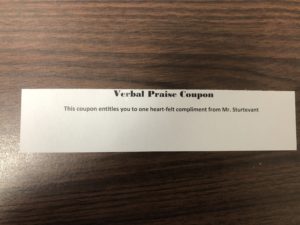Many teachers cringe when they hear “humor in the classroom” because it brings to mind the class clown–the scourge of serious learning. First of all, I want to note that not all class clowns are problematic. Some kids are just delightfully funny and have skills to use their humor without harm or disruption. However, there are class clowns that seem to be “the scourge” because teachers just do not know how to deal with them. In the past, many class clowns faced frightening consequences. (Back in the day, they probably took the brunt of the corporal punishment meted out at the principal’s office.) But regardless of the consequences, every school still had class clowns. It is not acceptable to violate the Geneva Convention; so let’s explore a better way to live with class clowns.
Teaching is a tough existence if you are at odds with your students. You can learn to welcome them, appreciate their humor, and keep them from disrupting or dismantling classroom plans or relationships. I’ll share some tips that I have learned from working at this challenge.
The most effective way to manage class clowns is to connect with them. Education would be a dull enterprise without their humor. Embrace that they exist, and try to get them on your side.
So, how do you do it? As with other discipline challenges, you set expectations, anticipate problems, strive for consistency, follow through with consequences when needed, and constantly work at a relationship with the clown. The better you connect, the more of a joy and asset her or his humor will be to the class.
Distractions from class clowns generally fall into three categories:
- general disruptions
- sarcasm
- derisive statements directed at other students, or you
The first step is to identify and anticipate the behavior. Most of us handle issues better if we have time to think about proper responses. Sometimes you have to think on your feet, but even then, it’s helpful to know what could be coming.
Avoid pulling the disruptive students out in the hall for a private “Come to Jesus” or “I am going to set you straight” talk. Even more, avoid giving the talk in front of peers. Most pranksters have been through this drill many times. Usually, those “talks,” appeals, or threats have not worked. Any “getting into trouble” that is public just elevates their status as the premier class clown.
Instead, your next step will be to build rapport with the class clown and hold him or her to pre-arranged expectations in class, during instruction. Your role as teacher, your skill at connecting, and your homage to the class expectations will be enhanced–in front of all students.
Finally, you will make contact with the class clown outside of class to work on a relationship of trust and care. This affirming follow-up communication deepens your connection.
In this episode, I’ll share ideas about how not only to manage a class clown…but to get them on your side!
Episode Template
The Problem:
Class clowns disrupt learning.
The Solution:
Build a relationship with the class clowns
What you can do Tomorrow:
- Make a list of your class clowns
- Game plan on how you would respond disruptive, sarcastic, or derisive statements or actions by class clowns
- Engineer how you can have a social interaction with a class clown tomorrow
Student/teacher relationships are essential to engagement. Win over your class clowns and your room will become a joyful and engaging place.
Listen to “82-Class Clown Mangagement” on Spreaker.



